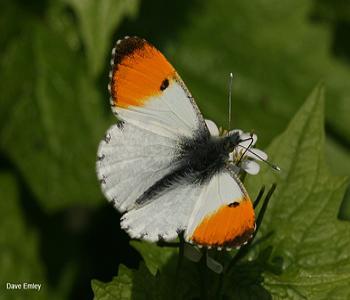Butterflies of Keele
 Twenty-seven species of butterfly have been recorded at Keele. This may not sound many if you come from the south of England but for North Staffordshire it is a good total. This number is a reflection of the range of habitats and food plants available.
Twenty-seven species of butterfly have been recorded at Keele. This may not sound many if you come from the south of England but for North Staffordshire it is a good total. This number is a reflection of the range of habitats and food plants available.
To a large extent the distribution of butterflies is controlled by the availability of their food plant. If this food plant is very localized or scarce then the butterfly concerned will similarly be localized and scarce - the White-letter Hairstreak, which feeds on Elm and Wych Elm is a good example. Conversely, species with a common food plant, such as nettle, are often widespread and common themselves. The familiar Small Tortoiseshell is a good example here.
This is not the whole story though. Some species may have a common food plant but are only found in certain habitats. For example, the Speckled Wood feeds on grasses but is only found in open-canopy deciduous woodland.
The numbers of butterflies can vary from year to year depending on larval survival rates. Some species are migrants so their numbers can be erratic. Even though there are 27 species at Keele, you may not find all of them in any one year. Some of them are only to be found at certain localities on campus while others only emerge at certain times of the year.
The fortunes of our butterflies are cause for concern. Some species, such as Wall and Dingy Skipper, have virtually disappeared from Keele while others, like Essex Skipper, Small Skipper and Ringlet, have become quite common.
The menu above will take you pages, with photographs, on each species. I am always keen to receive sightings.


